High-Quality Line Pipe Steel for Oil & Gas Pipelines
Navigating the Landscape of Line Pipe Steel: Trends, Technologies, and Applications
In the intricate world of global infrastructure, the role of high-quality pipelines cannot be overstated. From transporting vital energy resources like oil and natural gas to distributing potable water and managing industrial waste, the backbone of these critical systems is robust and reliable piping. Central to this reliability is line pipe steel, a specialized class of steel engineered to withstand extreme pressures, temperatures, and corrosive environments. This comprehensive guide delves into the current industry trends, technological advancements, diverse applications, and the inherent advantages of superior line pipe solutions. We will also explore the critical manufacturing processes, exemplified by advanced systems like the Welded Pipe Production Line, which ensures the integrity and longevity of these essential conduits.
The escalating demand for energy, coupled with a growing focus on sustainable infrastructure, continues to drive innovation in the line pipe sector. Modern line pipe engineering goes beyond mere material strength, incorporating sophisticated metallurgy, advanced welding techniques, and stringent quality control protocols to meet the evolving demands of projects spanning continents. Understanding the nuances of these technical specifications and the capabilities of advanced production lines is crucial for B2B decision-makers seeking optimal, long-term solutions.
Industry Trends and Market Dynamics in Line Pipe Steel
The global market for line pipe steel is dynamic, influenced by geopolitical factors, energy policies, environmental regulations, and technological breakthroughs. A significant trend is the increasing adoption of higher strength steel grades, such as API 5L X80 and X100, which allow for reduced wall thickness, lower material costs, and enhanced flow efficiency. This directly impacts project economics and environmental footprint.
- Sustainable Practices: There's a growing emphasis on environmentally friendly manufacturing processes and the development of pipes that offer extended service life, thereby reducing the need for frequent replacements and minimizing environmental disruption.
- Digitalization and Smart Pipelines: Integration of IoT sensors for real-time monitoring of pressure, temperature, flow, and structural integrity is becoming standard. This allows for predictive maintenance, enhanced safety, and operational optimization.
- Anti-Corrosion Technologies: With pipelines often traversing diverse terrains and exposure to aggressive media, advancements in external and internal coatings (e.g., FBE, 3LPE, liquid epoxy) are crucial for extending the lifespan of steel pipe line infrastructure and preventing leaks.
- Geographic Shifts: While traditional oil and gas regions remain strong, emerging markets in Asia, Africa, and Latin America are seeing significant investment in new pipeline infrastructure, driving demand for both seamless and welded gas pipe solutions.
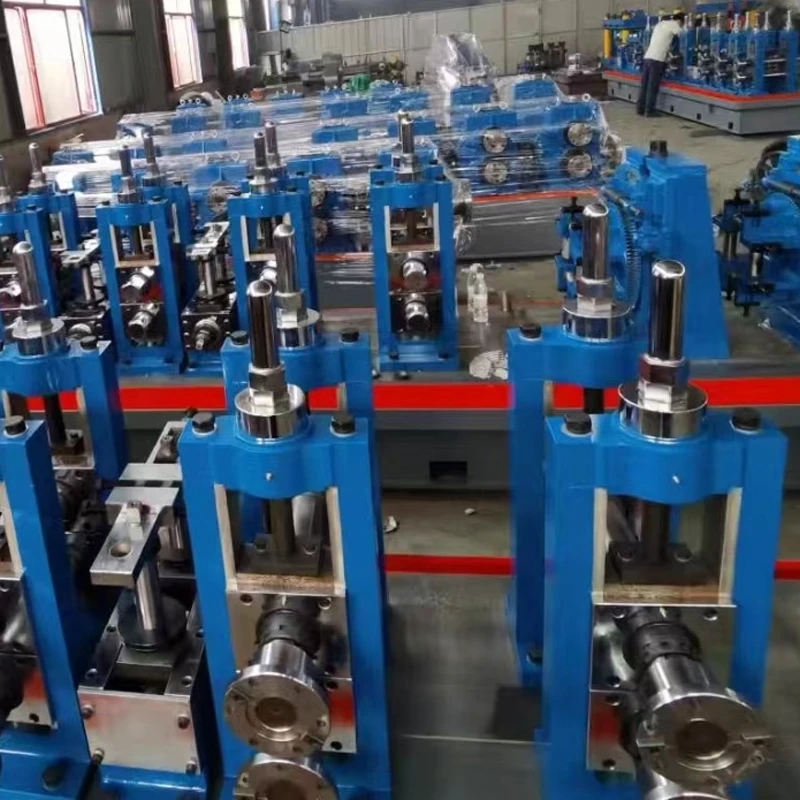
These trends highlight the need for manufacturers to be agile, innovative, and capable of producing specialized solutions. The ability to customize production, adhere to various international standards, and incorporate cutting-edge materials and manufacturing techniques is paramount for competitiveness in this evolving market.
Comprehensive Manufacturing Process of Line Pipe Steel
The manufacturing of line pipe steel is a complex, multi-stage process that ensures the final product meets the stringent requirements for high-pressure and critical applications. While seamless pipes are forged from solid billets, a significant portion of the market, particularly for larger diameters, relies on welded pipes. Our Welded Pipe Production Line exemplifies the advanced technology used to produce high-quality welded pipes, including ERW (Electric Resistance Welding), LSAW (Longitudinal Submerged Arc Welding), and SSAW (Spiral Submerged Arc Welding) pipes. Below is a detailed breakdown of the typical manufacturing process:
1. Raw Material Preparation:
The process begins with high-quality steel coils (for ERW/SSAW) or plates (for LSAW). These raw materials are selected based on the required steel grade, such as API 5L (e.g., Grade B, X42, X52, X65, X70), ASTM A53, ASTM A106, or ASTM A333, ensuring the desired mechanical properties like tensile strength, yield strength, and impact toughness are met. Material inspection includes chemical composition analysis and mechanical testing.
2. Forming:
For welded pipes, the steel coil or plate is progressively shaped into a cylindrical form. For ERW pipes, continuous coils are fed through forming rolls. For LSAW, individual plates are pressed or rolled into a U-shape, then an O-shape. SSAW involves spirally winding a steel strip and welding the seams. This stage is crucial for achieving precise dimensional accuracy.
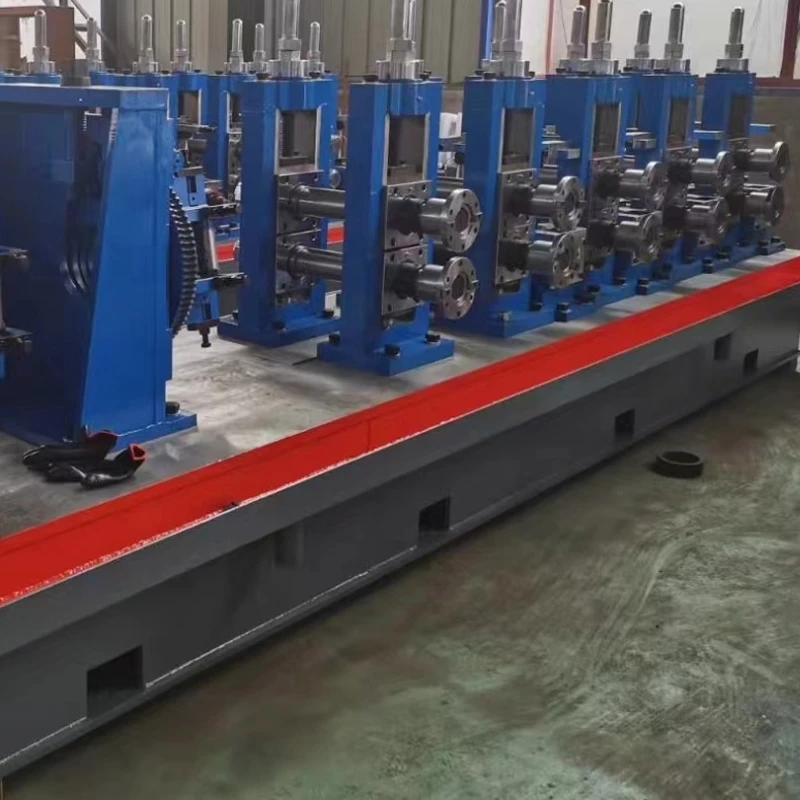
3. Welding:
The formed edges are joined by welding. Our Welded Pipe Production Line utilizes advanced welding technologies:
- Electric Resistance Welding (ERW): Edges are heated by resistance to an electric current and pressed together without filler metal, ideal for smaller diameter and thinner wall pipes.
- Submerged Arc Welding (SAW): Both LSAW and SSAW pipes use SAW, where an arc is struck beneath a layer of granular flux, protecting the weld from atmospheric contamination. This method provides high-quality, strong welds for large diameter pipes. Multiple passes may be used for thicker walls.
4. Sizing and Straightening:
After welding, pipes pass through sizing mills to achieve precise outer diameter and circularity. Straighteners then ensure the pipe is perfectly straight, critical for ease of installation.
5. Heat Treatment:
Depending on the steel grade and desired properties, pipes may undergo heat treatment processes like normalizing, quenching, or tempering. This refines the grain structure, improves toughness, and relieves internal stresses, enhancing the overall mechanical performance of the line pipe steel.
6. Non-Destructive Testing (NDT):
Rigorous inspection is paramount. NDT methods include ultrasonic testing (UT) for weld integrity and material flaws, X-ray inspection (radiography), magnetic particle inspection (MPI), and eddy current testing. These tests ensure that every section of the linepipe meets specified quality standards.
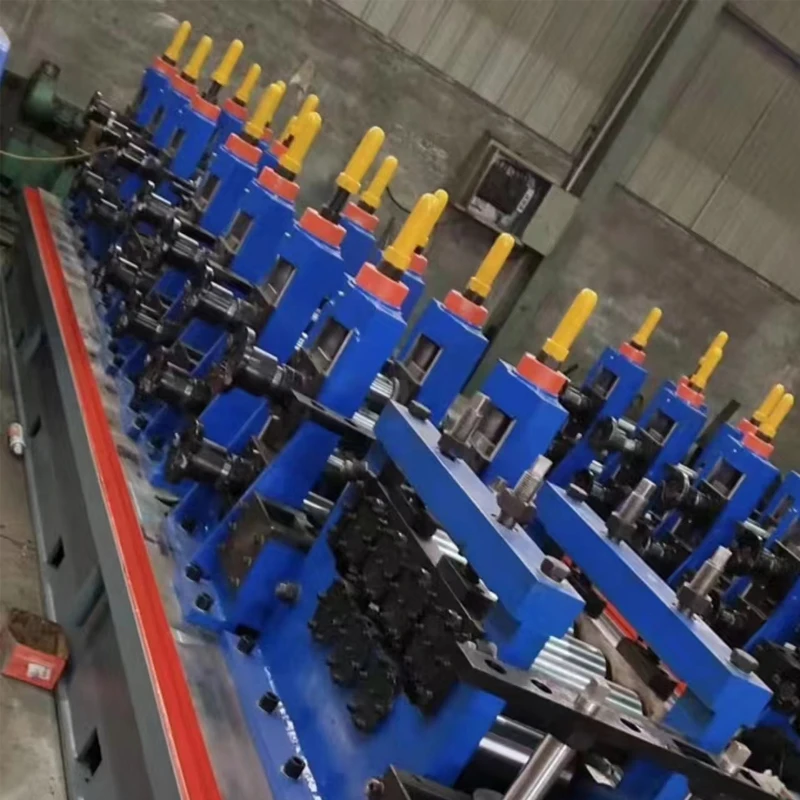
7. Hydrostatic Testing:
Each pipe section undergoes hydrostatic testing, where it is filled with water and pressurized to a level significantly higher than its maximum operating pressure. This critical test verifies the pipe's pressure containment capability and reveals any potential leaks or structural weaknesses, ensuring the integrity of the steel pipe line.
8. End Finishing and Coating:
Pipe ends are bevelled for welding compatibility in the field. External and internal coatings (e.g., fusion bond epoxy, polyethylene, polyurethane, or coal tar enamel) are applied based on environmental conditions and fluid type to provide corrosion protection, enhance flow, and extend service life. Our Welded Pipe Production Line ensures the pipe surface is optimally prepared for these protective layers.
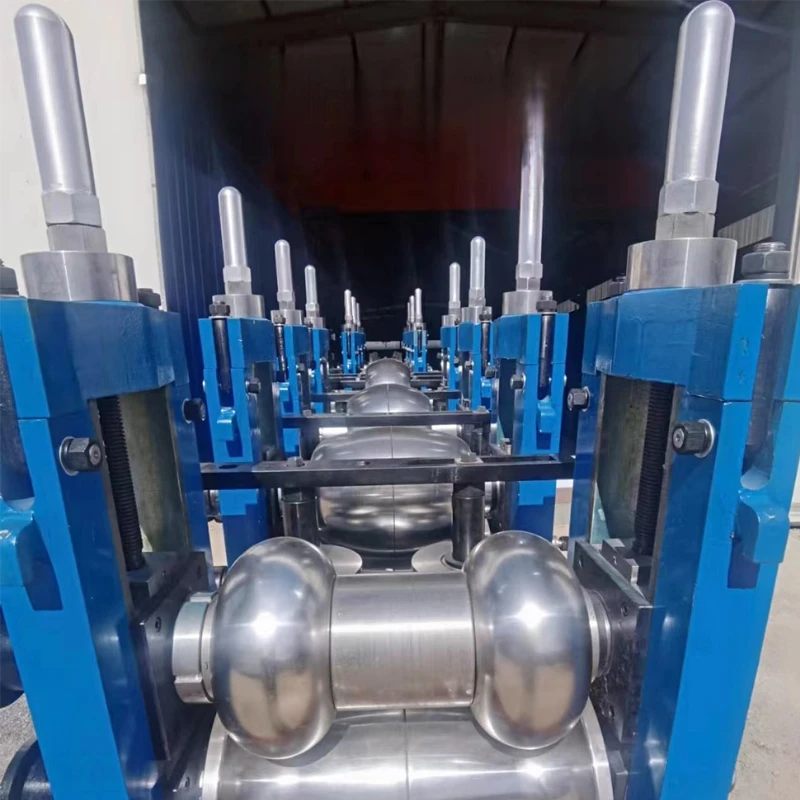
9. Final Inspection and Marking:
A final visual inspection, dimensional check, and documentation review are conducted. Each pipe is then marked with its unique identification, grade, dimensions, and standard compliance (e.g., API Monogram, ISO 9001, ASTM, ANSI). The entire process, from raw material to finished product, adheres strictly to international standards, guaranteeing product quality and traceability.
Key Technical Parameters and Specifications of Line Pipe Steel
The selection of line pipe steel involves meticulous consideration of various technical parameters to match the specific demands of an application. These parameters are often dictated by international standards such as API 5L, ASTM, ISO 3183, and DNV-OS-F101. Below is a table summarizing key parameters for commonly used line pipe grades, providing a data-driven perspective on their capabilities:
| Parameter | API 5L Grade B | API 5L X42 | API 5L X65 | API 5L X80 | Typical Range for Welded Pipe |
|---|---|---|---|---|---|
| Yield Strength (min, MPa) | 241 (35,000 psi) | 290 (42,000 psi) | 448 (65,000 psi) | 552 (80,000 psi) | 241 - 690 |
| Tensile Strength (min, MPa) | 414 (60,000 psi) | 414 (60,000 psi) | 531 (77,000 psi) | 621 (90,000 psi) | 414 - 760 |
| Outer Diameter (OD) | Ranges from 21.3mm (0.84 in) to 1219mm (48 in) for ERW/Seamless; up to 1422mm (56 in) for LSAW; up to 2540mm (100 in) for SSAW. | 21.3mm - 2540mm+ | |||
| Wall Thickness (WT) | Ranges from 2.77mm (0.109 in) to 50mm (2 in) or more, depending on OD and pressure rating. | 2.77mm - 50mm+ | |||
| Operating Temperature Range | Typically -29°C to 120°C (-20°F to 250°F), specific grades for higher/lower temp. | -60°C to 200°C (approx) | |||
| Corrosion Resistance | Enhanced by coatings (FBE, 3LPE, internal epoxy), metallurgy for sour service (NACE MR0175). | Requires appropriate coating/material | |||
| Standards Compliance | API 5L, ASTM A53/A106/A333, ISO 3183, NACE MR0175/ISO 15156. | All relevant industry standards | |||
The ability of a Welded Pipe Production Line to precisely control these parameters, especially wall thickness uniformity and material properties across vast lengths, is a testament to its technological sophistication. This precision is vital for the safety factor and overall service life of the pipeline.
Application Scenarios and Technical Advantages
The versatility and robustness of line pipe steel make it indispensable across numerous heavy industries. Its design and manufacturing ensure optimal performance in environments demanding high integrity and long service life. The main applications include:
- Oil and Gas Transmission: This is the primary application, encompassing crude oil, refined products, and natural gas pipelines (including welded gas pipe) traversing thousands of kilometers. These pipelines operate under high pressures and varying temperatures, requiring materials capable of handling extreme stress and resisting internal corrosion from various fluid compositions, including sour gas.
- Petrochemical Industry: For transporting chemical feedstocks, intermediate products, and finished petrochemicals within industrial complexes or between facilities. Resistance to specific chemical attack and high temperatures is critical here.
- Water Supply and Drainage Systems: Large-diameter pipes are used in municipal water distribution, irrigation projects, and industrial water treatment facilities. The focus here is often on high flow rates, long-term corrosion resistance for potable water, and structural integrity for buried applications.
- Mining and Slurry Transportation: Abrasion-resistant line pipe steel is used for transporting mineral slurries, tailings, and process water in mining operations, where internal wear and tear can be significant.
- Power Generation: Used in thermal power plants for steam and water lines, and in some cases, for flue gas desulfurization systems.
The technical advantages of well-engineered line pipe steel, particularly that produced on an advanced Welded Pipe Production Line, are manifold:
- Superior Strength-to-Weight Ratio: High-grade steels allow for thinner walls without compromising strength, reducing material costs, transportation weight, and installation complexity. This also contributes to energy saving during pumping by reducing resistance.
- Exceptional Corrosion Resistance: Through advanced metallurgy (e.g., adding chromium, molybdenum) and sophisticated multi-layer coatings, pipes can achieve decades of service life even in highly corrosive environments, preventing costly leaks and environmental damage.
- High Pressure and Temperature Tolerance: Designed to safely operate under extreme internal pressures and a wide range of ambient and fluid temperatures, crucial for volatile energy products.
- Enhanced Weldability and Ductility: Modern line pipe steel grades are designed for excellent weldability, facilitating robust field joining. Good ductility allows the pipe to absorb external stresses (e.g., ground movement) without fracturing.
- Longevity and Reliability: With proper design, material selection, and quality manufacturing, these pipes offer service lives exceeding 50 years, ensuring long-term infrastructure stability and reduced maintenance burdens.
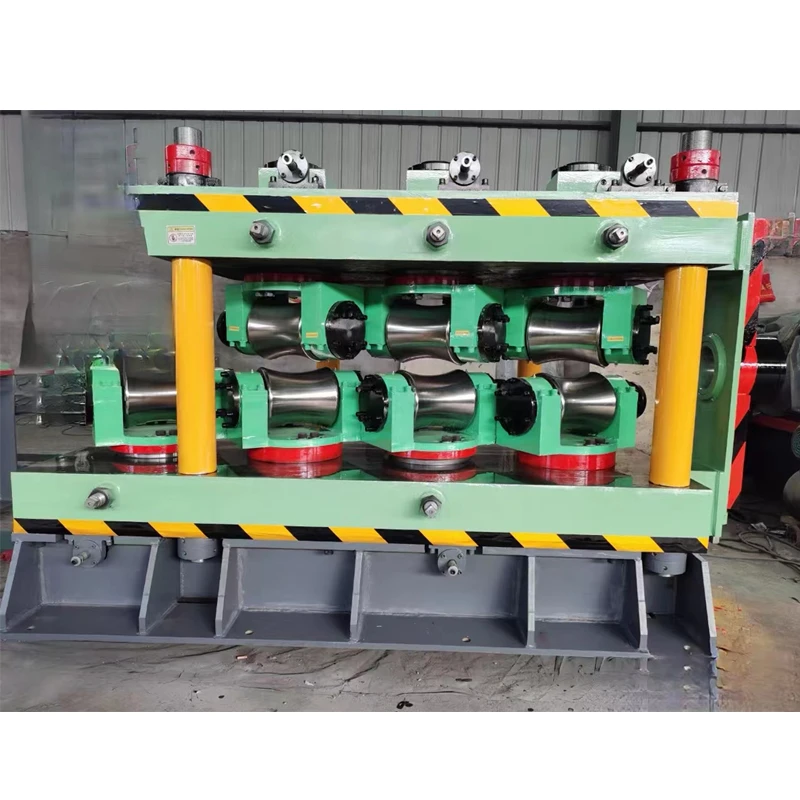
Manufacturer Comparison and Customization Capabilities
When selecting a supplier for line pipe steel or the equipment to produce it, discerning manufacturers stand out based on several key criteria. These elements define not just the product quality, but the overall partnership value. A reputable manufacturer, especially one specializing in a Welded Pipe Production Line, demonstrates:
- Certifications and Compliance: Adherence to international standards such as ISO 9001 (Quality Management Systems), ISO 14001 (Environmental Management), OHSAS 18001 (Occupational Health and Safety), and product-specific certifications like API Q1 and API 5L Monogram.
- Research and Development (R&D): A commitment to continuous improvement, including developing new steel grades, welding techniques, and process optimizations for enhanced pipe performance and efficiency.
- Production Capacity and Lead Times: The ability to scale production to meet large project demands while maintaining competitive delivery schedules for linepipe.
- Global Reach and Logistics: Experience in managing international shipping, customs, and on-site delivery for projects worldwide.
- After-Sales Support and Service: Comprehensive technical support, spare parts availability, and maintenance services to ensure the long-term operational efficiency of both the pipes and the production machinery.
Customized Solutions: The complex nature of large infrastructure projects often demands bespoke solutions beyond standard specifications. Leading providers of Welded Pipe Production Line equipment and the pipes themselves excel in offering customized solutions, including:
- Tailored Dimensions: Producing pipes with specific diameters, wall thicknesses, and lengths to optimize project design and minimize field welding.
- Specialized Coatings: Application of multi-layer anti-corrosion coatings (e.g., high-performance FBE for abrasive environments, custom internal linings for potable water or corrosive chemicals).
- Advanced Material Grades: Manufacturing pipes from specific high-strength low-alloy (HSLA) steels or carbon steels with enhanced properties (e.g., improved toughness for low-temperature applications or sour gas resistance).
- Project-Specific Engineering: Collaborating with clients to design pipes and production processes that address unique geographical, environmental, or operational challenges. This might involve customized pipe end preparations or specialized testing protocols.
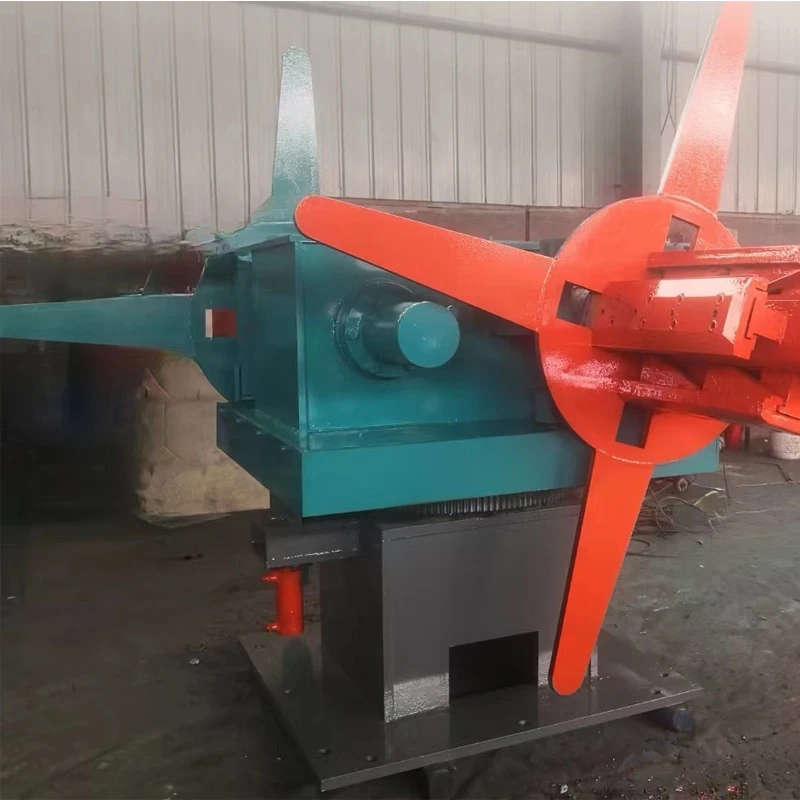
Application Case Studies & Client Success
The real-world application of high-performance line pipe steel, produced on advanced systems like our Welded Pipe Production Line, demonstrates its critical role in major infrastructure projects globally. While specific client names are often confidential, general examples highlight the impact of quality manufacturing:
- Transcontinental Natural Gas Pipeline: For a major natural gas transmission project spanning diverse terrains including deserts and mountainous regions, high-strength API 5L X70 and X80 linepipe with a diameter of 48 inches (1219mm) was required. The pipes were subjected to external 3LPE anti-corrosion coating for buried sections and internal epoxy lining for flow assurance. The manufacturer's ability to consistently produce pipes with tight dimensional tolerances and superior weldability facilitated rapid field installation, minimizing project delays and costs. The hydrostatic test results consistently exceeded specified pressure ratings, confirming the integrity of the welded seams.
- Offshore Oil & Gas Gathering System: For an offshore platform requiring robust submerged pipelines, specialized line pipe steel with enhanced corrosion resistance (NACE MR0175 compliant) and internal anti-fouling coatings was essential. The pipes, produced via LSAW, underwent stringent ultrasonic and X-ray inspections to ensure zero defects, critical for subsea environments where repairs are exceptionally challenging and costly. The project benefited from the supplier's advanced heat treatment capabilities, which optimized the pipe's toughness for deepwater laying.
- Large-Scale Industrial Water Supply Project: In a major urban development, a 60-inch (1524mm) diameter steel pipe line was required for a new potable water trunk main. The focus was on long-term structural integrity and prevention of contamination. Pipes produced with high-quality fusion bond epoxy (FBE) internal and external coatings ensured both corrosion protection and compliance with potable water standards. The project’s success was underpinned by the consistent quality and precise dimensions delivered by the Welded Pipe Production Line, allowing for seamless integration into the complex urban infrastructure.
These examples underscore that the success of critical infrastructure projects heavily relies on the quality and reliability of the linepipe, which in turn is a direct reflection of the production technology and expertise employed by the manufacturer. Our track record in delivering robust and reliable production solutions speaks volumes about the experience and authority we bring to this field.
Ensuring Quality, Trust, and Support
For B2B clients, trust and reliability are paramount. Our commitment to excellence in the production of line pipe steel via our Welded Pipe Production Line is built on a foundation of stringent quality control, extensive industry experience, and comprehensive customer support. We adhere to the highest international standards, ensuring that every product meets or exceeds expectations.
Authority & Certifications:
Our manufacturing processes and products are certified by leading global bodies. This includes ISO 9001 for quality management, ensuring a consistent and controlled production environment. For pipelines, adherence to API 5L specifications and the use of the API Monogram are standard, signifying compliance with the most rigorous industry requirements for oil and gas transmission. Our equipment and methodologies are regularly audited to maintain these prestigious certifications, providing our clients with absolute confidence in the products derived from our production lines.

Trustworthiness: FAQ, Delivery, and Warranty
Frequently Asked Questions (FAQ):
- Q1: What is the typical lead time for a custom Welded Pipe Production Line?
A1: Lead times vary based on complexity and customization. For standard lines, it typically ranges from 12 to 18 months, including design, manufacturing, testing, and pre-shipment assembly. Custom solutions may require additional time for engineering and specialized component sourcing. - Q2: What steel grades can your linepipe production process accommodate?
A2: Our production lines are designed to handle a wide array of steel grades, including all API 5L grades (up to X120), ASTM A53, A106, A333, and custom alloy compositions as per client requirements, ensuring suitability for various applications from sour service to high-temperature transport. - Q3: How do you ensure the quality of welds in your welded gas pipe production?
A3: We employ multi-stage NDT (Non-Destructive Testing) techniques, including automated ultrasonic testing (AUT), real-time X-ray inspection, and magnetic particle inspection (MPI) for every meter of weld seam. Additionally, mechanical tests (tensile, bend, impact) are performed on weld samples to verify strength and integrity. - Q4: What kind of after-sales support do you offer for your production lines?
A4: We provide comprehensive after-sales support including installation supervision, commissioning services, operator training, routine maintenance programs, remote technical support, and a readily available inventory of spare parts. Our global service teams are equipped to provide timely assistance.
Delivery Cycle:
Our sophisticated supply chain management and manufacturing capabilities allow us to provide clear and reliable delivery schedules. For line pipe steel orders, lead times are communicated transparently and managed with robust project planning software to ensure on-time delivery, even for large-scale international projects. This includes efficient logistics, customs clearance, and safe transportation to the final destination.
Warranty and Customer Support:
We stand by the quality of our Welded Pipe Production Line and the pipes it produces with comprehensive warranty coverage, typically ranging from 12 to 24 months for manufacturing defects. Our dedicated customer support team is available to assist with any technical queries, operational challenges, or maintenance needs, ensuring continuous and efficient operation of your investment. We prioritize building long-term partnerships based on mutual trust and sustained performance.
Conclusion: The Future of Line Pipe Steel
The future of line pipe steel is intricately linked to global energy demands, environmental imperatives, and technological innovation. As infrastructure projects become more ambitious and operate in increasingly challenging environments, the demand for superior quality, highly durable, and cost-effective linepipe solutions will only grow. Advanced manufacturing systems like the Welded Pipe Production Line are at the forefront of this evolution, offering the precision, versatility, and efficiency required to meet these stringent requirements.
By investing in state-of-the-art production technology and adhering to the highest standards of quality and service, manufacturers ensure the reliability and longevity of critical pipeline infrastructure worldwide. Partnering with an experienced and authoritative provider of steel pipe line solutions means securing not just a product, but a commitment to excellence that underpins the success of your most vital projects.
References
- American Petroleum Institute. (2020). API Specification 5L: Specification for Line Pipe.
- ASTM International. (Various). ASTM A53/A53M: Standard Specification for Pipe, Steel, Black and Hot-Dipped, Zinc-Coated, Welded and Seamless.
- International Organization for Standardization. (2012). ISO 3183: Petroleum and natural gas industries — Steel pipe for pipeline transportation systems.
- National Association of Corrosion Engineers. (2015). NACE MR0175/ISO 15156: Petroleum and natural gas industries — Materials for use in H2S-containing environments in oil and gas production.
- Wang, T., Li, X., & Li, Y. (2019). Development of High Strength Line Pipe Steels and Their Welding Technologies. Journal of Materials Science & Technology, 35(1), 173-182.
-
Advanced PVC Belling Machine for Efficient Pipe ProductionNewsAug.19,2025
-
High-Frequency Straight Seam Welded Pipe Production Line-BzZhou Xinghua Machinery Equipment Manufacturing Co., Ltd.|Steel Pipe Manufacturing, Precision EngineeringNewsAug.18,2025
-
High Quality Enamel/Pre-seasoned Camping Square Cast Iron Grill Pan-BzZhou Xinghua Machinery Equipment Manufacturing Co., LTD.NewsAug.18,2025
-
High Quality Enamel/Pre-seasoned Camping Square Enamel Cast Iron Grill Steak Pan - BzZhou Xinghua Machinery Equipment Manufacturing Co., LTD.NewsAug.18,2025
-
Automatic Pipe Belling Machine - Precision & SpeedNewsAug.18,2025


